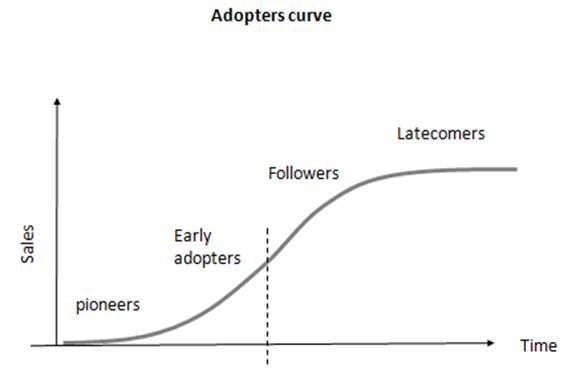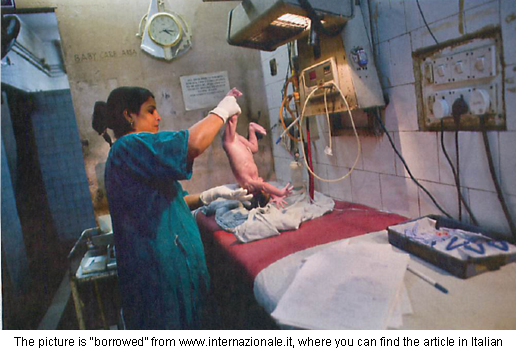



|
Stay tuned: |
|
Touch them 7 times, to make Change last. |
|
I have bumped into a very touching article written by Surgeon Atul Gawande for the New Yorker, title “Slow ideas”. It’s a strong appeal to the value of “persistence” and “human touch” in spreading some medical bestpractices, capable of saving millions of lives.
This article was the definitive confirmation of what I have experienced and preaching out since a dozen of years in my Change Management practice. You can go and read it from the link above, or ask me my underlined copy. But I want to recap some of the key arguments here:
It’s not only a matter of punishments and rewards, blaming or prizing. The first point of the article that matches my experience is that new ideas need a change in people’s culture. Begging for the adoption of new ideas (“please do X”) works, but only up to the point people do not have to personally spend themselves in doing so. Prohibitions quite often make people so uncomfortable that they will end preferring to leave the “game” then accepting the imposition ( even if this will hurt themselves). Incentives and rewards Are useful but then it complicates a lot the rules, cause you have to calibrate rewards based on achievements, control the adoption rate and match the rewards to the share of work done by the parties involved… Also this does not achieve a full adoption across the population. What is needed is a cultural and system change. Establish the new idea as “the” norm, against the “old norm”. But what does it takes to create a new “Norm”? You have to understand people. You have to understand people’s existing norms. ( and how they have been created and adopted) You have to understand physical (i.e. system’s) barriers and personal resistances.(see my collection: “10 Resistances and their Tuscan translation” ask for them here) And here comes the point of Mr Gawande that made me find into his thinking path. You need a Mentor. Yes, You need to Mentor each person in your subject population. And the reason is that every person has its own personal resistance profile. You need Human touch. Willing to implement a change through a mentoring each person is not easy. Many can immediately blaming of the impossibility to deploy enough resources to do so. Other can blame about poor scalability. But this is exactly what has worked in Mr Gawande experience in making hygiene practice be adopted in places like the poorest India. In his articles he explains how building a pyramidal Mentors structure was able to create a dominos effect that transferred the idea to each single person. In this way the idea passed through a human touch. The adopter was first introduced to the “mentor”, then to his “friendship”, then to his “concepts an norms” and finally to the “new idea”. You need persistence: The other observation Mr Gawande does is that “it takes 7 touches to make a doctor adopt a new medicin”. This is the experience of pharmaceutical salesmen. They need to literally touch at least 7 times the doctor, before that he will bring into consideration to use a new drug. And this is what I got as an experience too. In my Change Management projects I always see how making the change be adopted and last is not only a matter of communicating, teaching, blaming or rewarding. Is a matter of persistence. Winning the population one person at time, lavaraging the pioneers to win over the early adopters and then moving to the followers and the latecomers. The first two: pioneers and early adopters are the ones you can Beg, Bull, Blame, Buy, Bright, Beat and ultimately: Black Mail. But to move above the inflection of the Adopters curve, you need to spend your resources in Mentoring one person at time.
You need your Sponsor: Above the inflection you need resources. Mentoring requires persistence, commitment, resources and human touch. It’s here that your Sponsor becomes essential. You need that he spends his personal trust on the project, that he allocate the resources and the patience to see the results. Whenever my Project Sponsor was not there to support this second phase of the project, the population returned to the previous “systems of norms”.
On the contrary: whenever the Sponsor helped the Mentoring program bringing in his weight on pushing the mentoring wave move forward, (having the patience to build the “seven touches” relationship among the Mentor and the Mentee: from “introduction” to “friendship”) , the project has been a lasting success.
I hope this helps you put innovation in the right contest. But I am always happy to learn from your point of view: Just call me at +39 02 8719 8498 or drop me a line!
Flavio
Leave a message here:
Or join the discussion here:
Contact us, no obligations.
|


|
Flavio Tosi |


|
Join our mailing list You will be alerted about: · new reports, · ideas’ discussions, · business opportunities, · go-to-market initiatives...
Read previous posts: · How to put VDR documents under control · Reversing the business flow · 7 things to consider in doing business in Arabia · Touch them 7 times, to make change last. · Beware who tells You MBAs are not fitting for innovation. · Serving the anti-cycle markets. · Selling to the Oil & Gas industry. · Kant would have known better… in BPR. · Why your business model is no longer competitive? · So, you want to increase sales, don’t you? |
